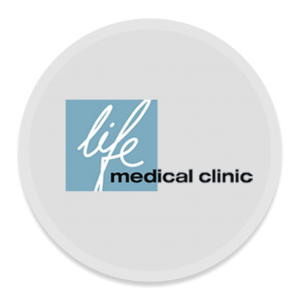High blood pressure and low blood pressure are two different conditions that are said to happen when our blood pressure is not at the usual level. These conditions come with their own set of risks, symptoms, and causes.
Blood pressure simply means the pressure that the blood exerts against the artery or the vein walls. Blood pressure measurement is of two types: systolic pressure and diastolic pressure. Systolic pressure in the arteries is when the heart beats and fills our arteries with blood. Diastolic pressure is the pressure in the arteries when the heart rests between the beats. A blood pressure cuff measures the blood pressure called a sphygmomanometer.
High blood pressure increases the risk of heart diseases, stroke, kidney disease, and dementia. In addition, if the blood pressure remains constantly high, your blood vessels may weaken and eventually lead to narrow blood vessels and clots. High blood pressure is dangerous because it makes our body work harder to pump blood into the body. Although it’s rare high blood pressure may lead to bursting of the blood vessels or even heart failure.
People who consume a lot of salt, are smokers, or don’t exercise are more prone to high blood pressure. High blood pressure has a lot to do with our family history. Aging can also be a reason for high blood pressure, which not many people know about. Having health issues like diabetes, kidney disease, or high cholesterol can double the risk of high blood pressure.
The medical name for high blood pressure is hypertension. In the case of hypertension, blood pressure typically falls below a systolic value of 90 and a diastolic value of 60. Causes of high blood pressure include:
1. Obesity
2. Too much alcohol consumption
3. Excessive salt intake
4. Smoking
5. Diabetes
6. Genetics
7. Stress
8. Ageing
When it comes to high blood pressure, there are no symptoms, and it’s just the readings that can be the establishing factor. But if your blood pressure is very high, these are the noticeable symptoms:
1. Severe Headache
2. Feeling of fatigue or confusion
3. Difficult vision
4. Chest Pain
5. Difficulty in breathing
6. Irregular heartbeat
7. Blood in the urine
8. Pounding in the chest, neck, or ears
To treat high blood pressure, you just need to make small lifestyle changes, including exercise, eating clean and healthy, quitting smoking, limiting drinking, and taking prescribed medication.
Low blood pressure is also not good because it can reduce the blood flow to our brain, blood, and other essential organs. It can lead to organ failure if not treated at the right time. Slightly low blood pressure is acceptable, but it should not fall too low.
The medical name for low blood pressure is Hypotension. In hypotension, the blood pressure falls below the systolic value of 90 and a diastolic value of 60. It can result in tiredness and dizziness. Causes of low blood pressure can be an infection in the bloodstream, diabetes, thyroid, blood loss due to injury, weakness caused by dehydration, and pregnancy can also be a cause. Unlike high blood pressure, there are symptoms of low blood pressure but not necessarily constant ones. Some of its symptoms are:
1. Dizziness or feeling light-headed
2. Fainting
3. Difficulty in concentration
4. Blurry vision
5. Nausea
6. Cold and pale skin
7. Rapid and shallow breathing
8. Feeling fatigued
9. Depression
10. Feeling Thirsty
To diagnose it, you can check your blood pressure frequently; blood tests and electrocardiogram (ECG) are one of the most common options. In addition, you can treat it by simply consuming more salt, drinking more water, wearing compression stockings, and taking the medicine that your doctor prescribes.
WHAT IS MORE DANGEROUS?
Both are dangerous, but high blood pressure is more difficult because it is a ‘silent condition and it takes years to know about. Initially, it does not cause that much harm, but if left untreated, it can lead to a stroke or a heart attack. High blood pressure is considered more dangerous because you cannot know if you have it unless you get yourself checked. Low blood pressure should be taken care of only if you’re feeling dizzy, dehydrated, or if you faint.
If you’re concerned about your health, be it high or low blood pressure, your doctor at health centers can enlighten you about your health, possible risks, and what you can do to stay safe.



